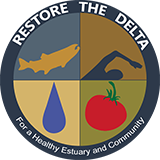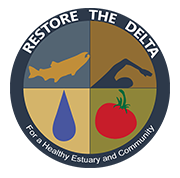Those concerned about disruptions in water deliveries in the event of an earthquake –induced levee failure in the Delta should be taking a look at the Emergency Fabric Pipeline developed by inventor Terry Spragg.
To see how it works, you can watch this video on YouTube.
Over four years ago, Jeffrey Kightlinger, General Manager of the Metropolitan Water District of Southern California, agreed that Spragg’s waterbag technology was “feasible and could potentially be applied for either emergency use or regular water supply.”
Two years ago, U.C. Berkeley GeoEngineering Professor Ray Seed wrote to the Delta Stewardship Council encouraging them to test the Spragg Flexible Fabric Pipeline for emergency, interim, or backup use in the Delta. He argued that
“a singular focus on the current effort to push through a secure transmission facility [is] an inadvisably risky approach, given (1) the unacceptably high current stakes, (2) the unacceptable likelihood that a seismic disaster will occur before such a secure transmission facility can be put in place . . . and (3) the likelihood that construction of a secure transmission facility will continue to be further delayed anyway (by political and legal obstacles an challenges, etc.).”
Last year, Mr. Spragg himself proposed a demonstration project to the Delta Stewardship Council. Notes Spragg, “One of the advantages of our technology is that it is not permanent, as it can be removed once conditions on the ground improve. Its installation can be of benefit to both Northern and Southern California water interests.”
If you haven’t heard anything about this, you aren’t alone.
State water planners working on Delta issues don’t seem interested in anything that interferes with their single-minded focus on building something REALLY BIG. Even the Delta Stewardship Council seems unable to think outside that box, even for the sake of meeting one of the coequal goals: reliable water supply.
We don’t think Delta levees are likely to fail in an earthquake. But shouldn’t those who do think so be looking at every alternative for getting drinking water in an emergency to people outside the Delta who rely on it?

